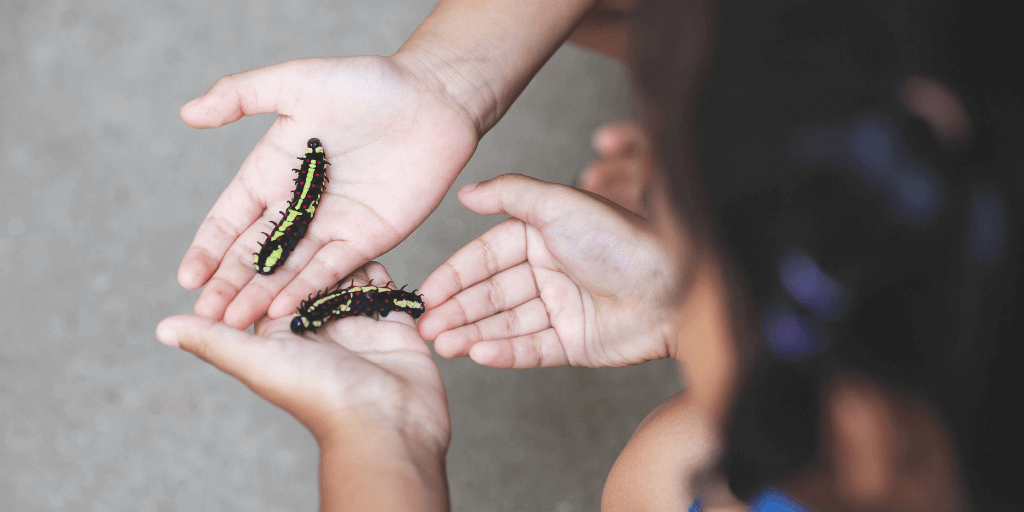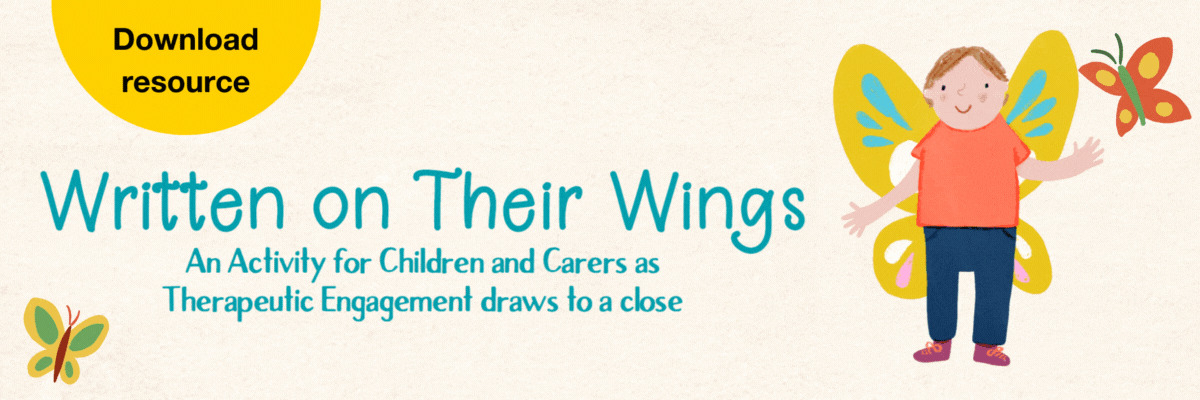
Why a cocoon is a transformative place for children
‘Why a cocoon is a transformative place for children’ blog article was written by Angela Weller, Lead – New Training and Resource Development, Service Development and Projects at Australian Childhood Foundation.
In the work we do with children at Australian Childhood Foundation, they ask us all sorts of fascinating questions. Their curiosity gives us insights into their hearts and provides learning opportunities for those of us working with them.
Recently, I heard a child ask:
“Does a caterpillar know when it turns into a butterfly and how does that happen? What happens in a cocoon to help this?”
This question led me to ponder many things including the beauty, simplicity and wisdom of a child’s musing. It also encouraged me to consider the process of change and transformation from a child’s unique perspective.
How a child experiences comfort and safety, and how they hold those feelings during change is central to this process. A cocoon is a perfect metaphor for the soft protection that a child needs to grow and develop. A cocoon is spun by the caterpillar from silk to protect itself whilst it lives inside. It envelopes and softly covers the small insect as it grows. The little creature can retreat safely until it emerges transformed and ready to explore the world in a different form.
In the process of looping threading, spinning and weaving, a caterpillar builds within the space what those around it have shown to be possible. This is just like a child, who internalises the people who understand and comfort them so they have a felt sense of deep safety and accompaniment when alone.
The caterpillar not only requires safety inside its cocoon but needs to have an experience in the space that nourishes and provides the resources for its transformation. Important relational experiences for children – like love, nurture, confidence and creative ideas – give them a brave re-entry into the world.
When a caterpillar emerges from its cocoon, it does so knowing that those around it will be waiting with love and acceptance for their small brave steps into a new identity. Like a child, they need patience and attention to what this transformation has yielded. They can only take these small brave steps when they are cushioned by the belief of someone who loves them.
Once they have emerged, an internal experience becomes one of shared meaning. As professionals working with children, some questions we might ask are:
- How does a child know that they have changed?
- How do they celebrate this and embody the actions that enable this new identity to flourish, this flight amongst a new array of colours?
A child in the process of transformation is supported to continue to discover and practice something precious and hopeful that they wish to experience or become. The awareness of these precious qualities has often been violated or taken away from children in the experience of abuse. Or, they have never been shown what is valued and loved about them.
Therefore, the work and process of change becomes an ongoing curious and sensitive exploration of what they can discover and know about themselves. The authentic recognition and ongoing amplification of these unique qualities become the continuing story of transformation with those around them.
People close to the child support the discovery and elaboration of these qualities, their meaning and their embodiment in the child. When a child sees and recognises a representation of themself in the hearts and eyes of their carer it becomes one that they can accept and internalise.
This mutual representation is a point of change for how a child sees themselves and how a relationship continues to explore and reinforce this. It can continue to delight in the new dimensions and stories about the child.
So, in answer to the child’s question – a caterpillar turns into a butterfly by weaving into its cocoon the hopes, dreams love and courage that they feel from those close to them. When they emerge, they are welcomed and celebrated and recognised as the butterfly they had patiently waited to become.
A child can nest, rest and snuggle in their cocoon and dream of flying each day a little bit stronger and braver than before. And then they do it!
Subscribe to the Professionals Newsletter
Our regular e-newsletters help connect you to our blog, research, free resources as they are produced and training opportunities including access to experts in the field, webinars, international speaker tours and our conferences.
More than 40,000 professionals from around the world are already connected. We would love to keep you in the loop.

